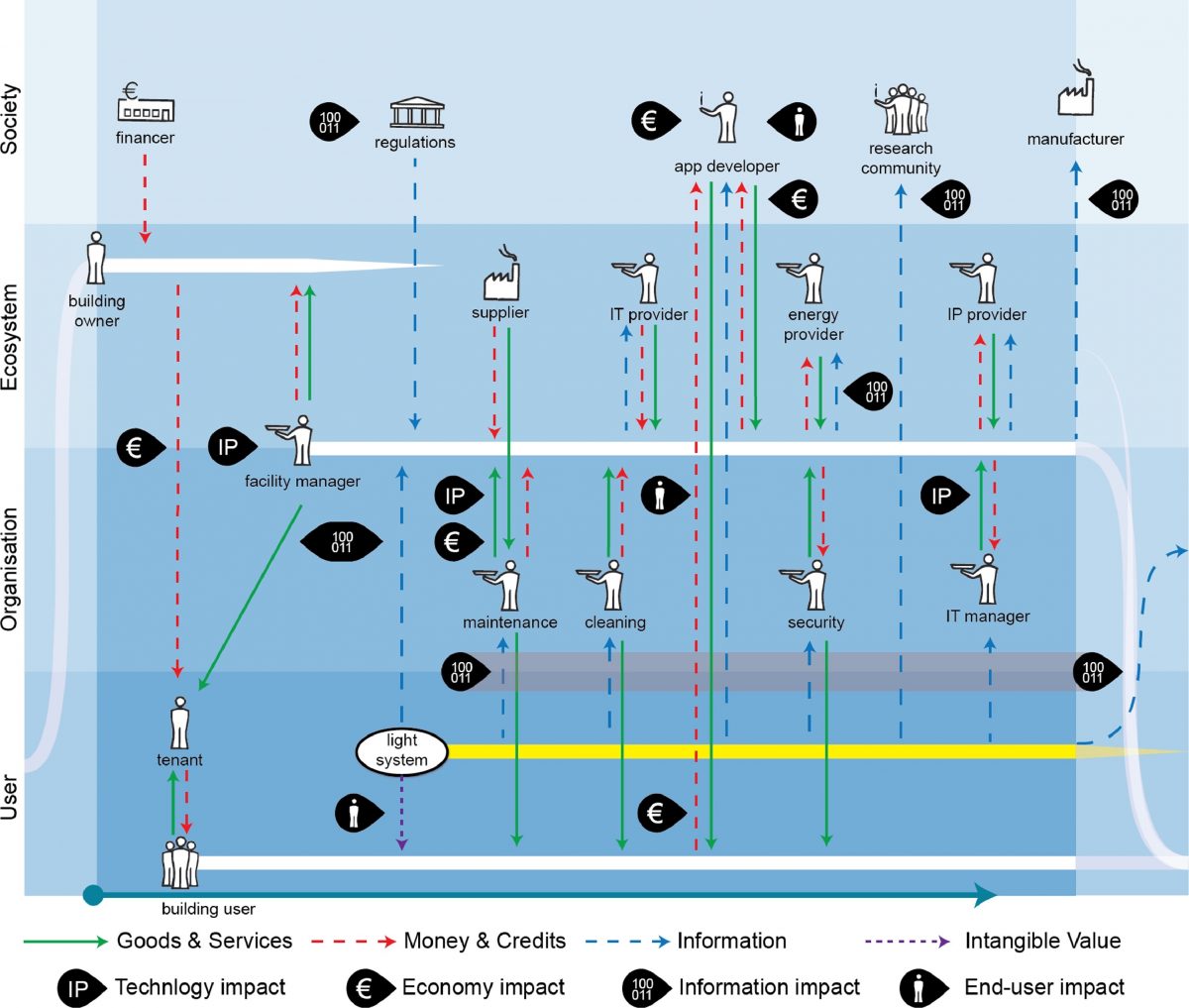This research is part of my doctoral work Designing for the Internet of Lighting and published in a separate paper.
Lighting systems in offices are becoming an infrastructure to connect people, devices, and systems to each other and to the Internet, creating an Internet of Lighting (IoL). This can bring advantages to stakeholders involved, and is expected to have a disruptive impact on the value chain.
This study investigates the potential impact of IoL on the European office lighting value chain. By interviewing 28 professionals from lighting and IoT companies, we formulate four perspectives with corresponding drivers of change: IP to the end node, standardisation, sharing data, and light as a service. Potential impacts on value have been formulated for each driver, and are operationalised towards stakeholders using the layered value network model. The validity of the model is shown by populating it with the European office lighting value chain.

Additionally, we construct the layered value network model, that is used to model the existing European lighting value chain by positioning stakeholders in four phases of a construction project (Design, Bid, Build, and Use) and according to four levels of value contribution (value for Users, Organisations, Ecosystems, and Society).

Finally, the model and four perspectives on impact were used to provide a detailed overview of the identified impacts during the study.

The expected impacts were reassessed after the completion of the OpenAIS project, and finally used to formalise the models into a method for systematic impact assessment. Read more about it in this post.
